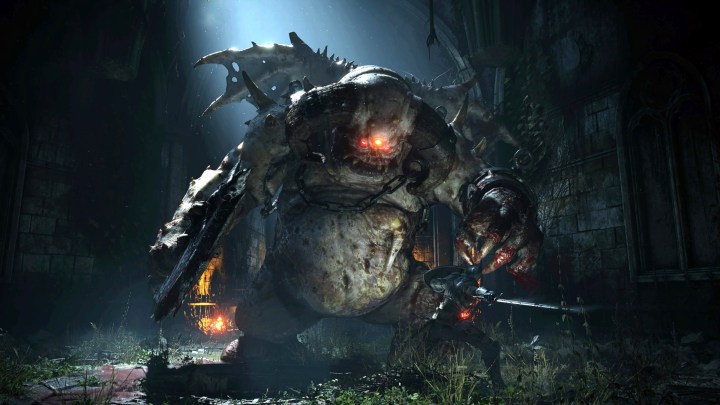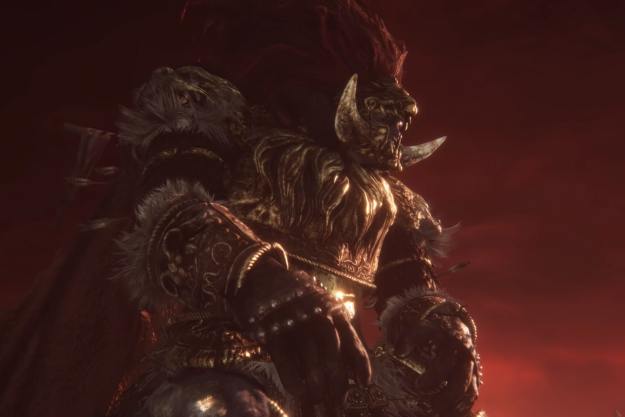Prior to 2022, I was what you might call a “Dark Souls hater.” I just couldn’t find the fun in acclaimed FromSoftware games like Bloodborne, which left me raging without giving me the sense of reward die-hard fans feel when they slay a tough boss. So, it came as a shock when I fell in love with Elden Ring earlier this year. Its open-world structure cracked the subgenre wide open for me, allowing me to better understand the appeal.
I figured the buck stopped there when it came to my ability to enjoy FromSoftware games. The game’s lack of a linear structure solved a lot of problems I had with the genre, so I wasn’t itching to start the less-forgiving Dark Souls series anytime soon. But when I subscribed to the PS Plus Extra tier and gained access to 2020’s Demon’s Souls remake, I figured there was no harm in giving the series another shot. Maybe my love of Elden Ring would make me appreciate the granddaddy of Souls games, even if I didn’t end up liking it.
My plan worked a little too well. After a four-day binge, I wound up loving Demon’s Souls — so much that it made me more unexpectedly critical of
Legible design
Coming off of the 100-plus hour
I hesitate to call Demon’s Souls easy, because even the easiest Souls game is still harder than most titles. However, the remake is a more legible experience that’s easier to take in at a glance. Take its boss encounters, for instance. Each boss is built around a clearly defined central idea that’s easy to pick up on the first attempt. I was able to immediately comprehend that the Old Hero is completely blind and will only target me once I make a scene. Due to clear encounter designs like that, I was able to beat half of the game’s bosses on my first try, sight unseen.

That wasn’t my experience in
That same philosophy applies to the levels leading up to bosses too. The more straightforward areas aren’t as reliant on “gotcha!” traps that are a fun shock once and an annoyance every time after. Something like a surprise boulder drop only tends to happen once or is easily avoided once you know it’s coming. Demon’s Souls isn’t really interested in making players struggle over and over just to get to the point where they can even begin learning.
That’s the main difference that’s made the Demon’s Souls remake my favorite FromSoftware experience to date. My final playtime wasn’t padded out by hours spent bashing my head against a wall. I couldn’t stand
The little things
It’s Demon’s Souls’ more subtle details that have finally allowed me to put my finger on aspects of
Demon’s Souls doesn’t have that problem. I always felt a difference when I made a single vitality stat increase or weapon upgrade. I became much more willing to farm for experience or resources because I knew exactly how it would pay off. I was able to settle on a build much earlier as I could better feel how each stat would shape my playthrough.

In general, I was more open to experimentation in Demon’s Souls than I was in
Nuances like that made it easier to engage with all of Demon’s Souls‘ systems, with very little leaving me totally stumped (though world tendency is still a total mystery to me). While I loved how sprawling and open

The Demon’s Souls remake isn’t without its own issues. Infrequent checkpoints turn certain sections of the game into a slog and FromSoftware’s historically terrible third-person camera left me struggling with otherwise easy fights like the Armor Spider. To developer Bluepoint’s credit, though, it’s done a fantastic job cleaning up the aging PS3 game. It feels more modern than
While I imagine that the incredible success of Elden Ring will convince FromSoftware to further widen the scope of its games, I hope there’s still space for smaller Souls games down the line. A more concise experience can help demystify a series that only becomes more complicated as it builds upon its strengths.
Editors' Recommendations
- Elden Ring: Shadow of the Erdtree finally arrives this June
- Armored Core VI lives up to post-Elden Ring FromSoftware expectations
- Armored Core VI: Fires of Rubicon follows up Elden Ring in August
- Elden Ring’s first significant post-launch content is a PvP Colosseum
- Staff picks: Why Elden Ring is our 2022 game of the year



